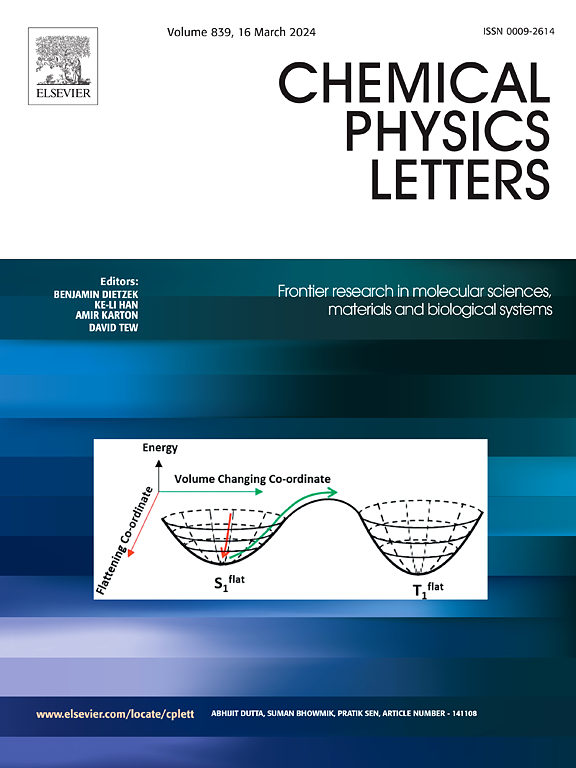Langmuir Blodgett为金刚石薄膜生长而进行的纳米金刚石播种
IF 3.1
3区 化学
Q3 CHEMISTRY, PHYSICAL
引用次数: 0
摘要
在本研究中,研究了C12和C18碳氢化合物链对纳米金刚石进行化学修饰,以用于Langmuir-Blodgett沉积。疏水纳米金刚石从二氯甲烷(本研究中最好的溶剂)中扩散,并使用30 mN/m的压缩将纳米颗粒转移到硅衬底上。将衬底加热到400°C表明颗粒不会解吸或形成聚集体。最后,采用热丝化学沉积法(HFCVD)将种子衬底用于金刚石生长,得到了约2.8±0.1 μm厚的无针孔金刚石膜,证明了该方法的可行性。本文章由计算机程序翻译,如有差异,请以英文原文为准。

Nanodiamond seeding by Langmuir Blodgett for diamond film growth
In this study, nanodiamonds chemically modified with C12 and C18 hydrocarbon chains were studied for their use in Langmuir-Blodgett deposition. The hydrophobic nanodiamonds were spread from dichloromethane (best solvent in this study) and a compression of 30 mN/m was used to transfer the nanoparticles onto the silicon substrate. Heating this substrate to 400 °C indicates that the particles do not desorb or form aggregates. Finally, the seeded substrate was used for diamond growth via hot filament chemical deposition (HFCVD), resulting in growth of a ca. 2.8 ± 0.1 μm thick diamond film without pinholes, illustrating the feasibility of this approach.
求助全文
通过发布文献求助,成功后即可免费获取论文全文。
去求助
来源期刊

Chemical Physics Letters
化学-物理:原子、分子和化学物理
CiteScore
5.70
自引率
3.60%
发文量
798
审稿时长
33 days
期刊介绍:
Chemical Physics Letters has an open access mirror journal, Chemical Physics Letters: X, sharing the same aims and scope, editorial team, submission system and rigorous peer review.
Chemical Physics Letters publishes brief reports on molecules, interfaces, condensed phases, nanomaterials and nanostructures, polymers, biomolecular systems, and energy conversion and storage.
Criteria for publication are quality, urgency and impact. Further, experimental results reported in the journal have direct relevance for theory, and theoretical developments or non-routine computations relate directly to experiment. Manuscripts must satisfy these criteria and should not be minor extensions of previous work.
 求助内容:
求助内容: 应助结果提醒方式:
应助结果提醒方式:


